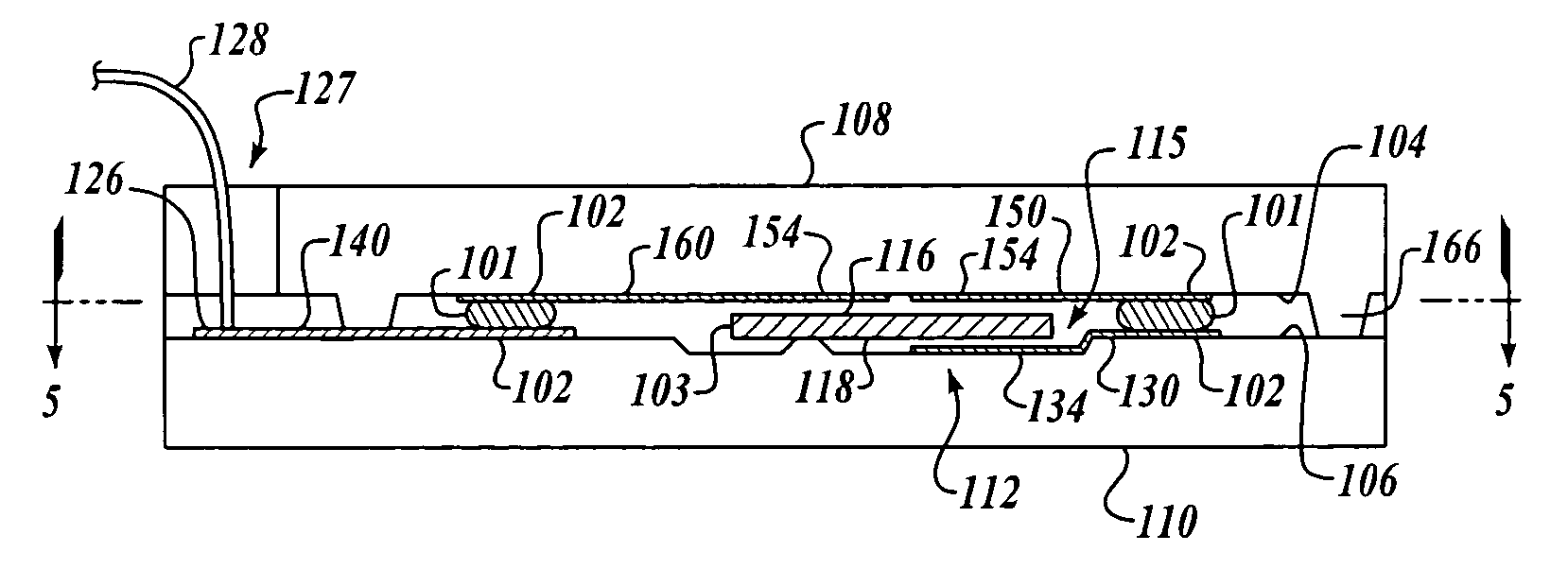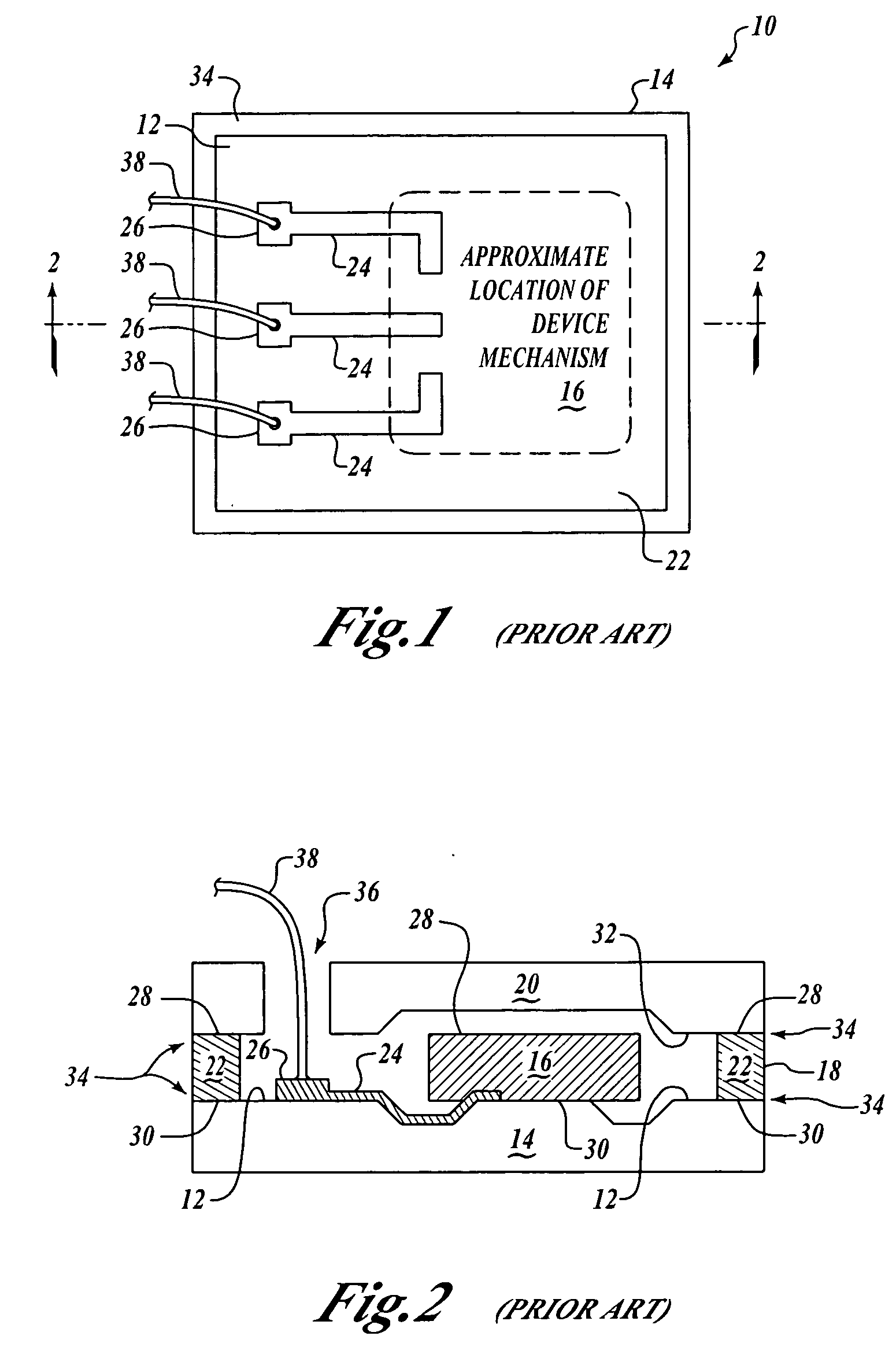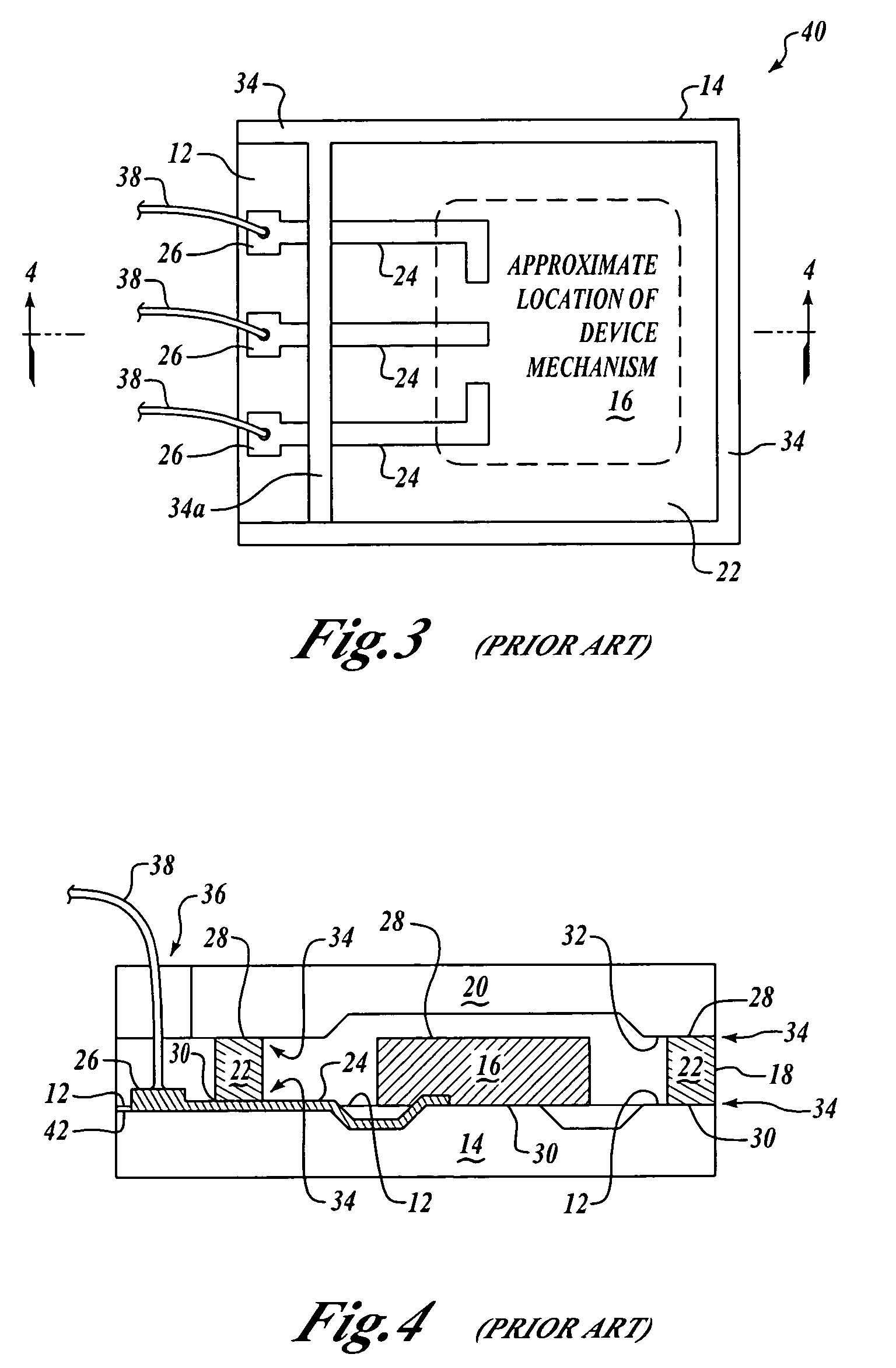Flip chip bonded micro-electromechanical system (MEMS) device
a micro-electromechanical system and chip bonded technology, applied in the direction of fluid speed measurement, acceleration measurement using interia forces, instruments, etc., can solve the problems of mechanical damage, stiction problems in the finished device, and sensitiveness of the mems devi
- Summary
- Abstract
- Description
- Claims
- Application Information
AI Technical Summary
Benefits of technology
Problems solved by technology
Method used
Image
Examples
Embodiment Construction
[0042] In the Figures, like numerals indicate like elements.
[0043] The present invention is an apparatus and method for communicating between opposing top and bottom surfaces of micro-electromechanical system (MEMS) devices by means of a plurality of conductive stud bumps on chip bond pads.
[0044] The use of conductive stud bumps on chip bond pads is well-known in the electronics industry for making electrical connections in microelectronic assemblies. Flip chip microelectronic assembly is the formation of direct electrical connection of face-down electronic components onto substrates, circuit boards, or carriers, by means of conductive bumps on chip bond pads. The flip chip technology, also known as Direct Chip Attach (DCA), replaces older wire bonding technology in semiconductor device assemblies which uses face-up chips with wire connections to the bond pads. Furthermore, wire bond connections are limited to the perimeter of the die, while flip chip connections can be made anywh...
PUM
 Login to View More
Login to View More Abstract
Description
Claims
Application Information
 Login to View More
Login to View More - R&D
- Intellectual Property
- Life Sciences
- Materials
- Tech Scout
- Unparalleled Data Quality
- Higher Quality Content
- 60% Fewer Hallucinations
Browse by: Latest US Patents, China's latest patents, Technical Efficacy Thesaurus, Application Domain, Technology Topic, Popular Technical Reports.
© 2025 PatSnap. All rights reserved.Legal|Privacy policy|Modern Slavery Act Transparency Statement|Sitemap|About US| Contact US: help@patsnap.com



